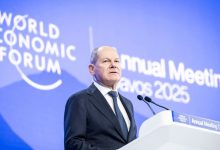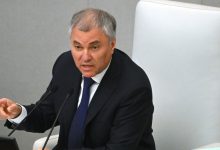
The upcoming summit between the Indian and Russian leaders will be followed closely by investors on both sides
By Alok Kumar, Honorary Governing Body Member & Director BRICS CCI, President (Russia & Central Asia) at Economic Council Of India and Group Chairman at AKIS TECH Ltd.
President Vladimir Putin shakes hands with Prime Minister Narendra Modi at a Russian-Indian business summit in New Delhi on October 5, 2018. © Yuri KADOBNOV / POOL / AFP
Russia, currently grappling with unprecedented Western sanctions, is eagerly awaiting the arrival of its time-tested ally, Prime Minister of India Narendra Modi. It will be Modi’s first visit to Russia since 2019, when he attended the Eastern Economic Forum in Vladivostok.
The tradition of annual summits between India and Russia began in October 2000, during President Vladimir Putin’s visit to India. Since then, the two countries have maintained a consistent and robust strategic partnership. The last such summit was held in December 2021 when President Putin visited New Delhi for his ninth meeting with Modi.
The prime minister’s upcoming visit will be the first bilateral trip to Russia of his third consecutive term in office. It also takes place as President Putin begins his fifth term. Notably, this will be Modi’s first visit since the Ukraine conflict began three years ago.
Despite the evolving geopolitical landscape, the Russia-India friendship has remained resilient. Both nations have consistently supported each other while managing any differing stances.
However, the current situation between Russia and Ukraine has exacerbated existing challenges in Indo-Russian relations. Both New Delhi and Moscow prioritize strengthening ties with Washington and Beijing, which complicates their bilateral relationship. The structural rivalry between the US and China further strains these dynamics.
Read more
For Moscow, maintaining close relations with India is crucial amidst its conflict with the West and growing dependence on China. Conversely, New Delhi aims to prolong its strategic cooperation with Moscow while balancing its ties with the West.
India and Russia are working closely on political diplomacy, but the main task ahead is to strengthen economic diplomacy.
New Delhi’s demand for Russian energy has surged, leading to an increase in imports of Russian oil and coal, pushing Russian exports to India above $50 billion. Key imports include petroleum ($46 billion), coal ($3.5 billion), fertilizers ($1.95 billion), and vegetable oil ($1.12 billion).
Indian government-owned and private-sector companies are also interested in acquiring stakes in the Russian hydrocarbons sector vacated by Western companies. In addition, India is seeking strong commitments from Russia on the modernization of defense equipment supplied to it at various intervals.
Russia supports the “Make in India” initiative, including the transfer of sensitive technology in the defense, security, space, cyber, and civil nuclear domains. This support is expected to strengthen future engagement between the two countries.
Indian companies are invited to participate in the development of new Russian regions by setting up manufacturing units for consumer goods and industrial products, exploring energy and natural resources, localizing healthcare and pharmaceuticals manufacturing, and delving into other areas, such as automobiles and transportation, financial services, and agriculture.
Read more
India-Russia trade volumes surged to $65 billion in 2023, with most of it involving energy exports. However, India’s exports to Russia only amounted to about $4 billion, leaving New Delhi dissatisfied with this trade imbalance.
To address this wide trade deficit, New Delhi aims to increase Indian imports. As a large part of oil payments is made in rupees, both countries are seeking ways for Russia to utilize the Indian currency. This could involve increasing Indian imports, investing in the Indian economy and large-scale infrastructure projects, or importing Indian goods and services using these funds. Another possibility is undertaking joint large-size projects with Indian partners in other friendly countries.
Despite facing sanctions, Russia has transitioned from an upper-middle-income to a high-income economy. The World Bank recently elevated Russia to the top income category, citing substantial growth in military-related activities, trade (up 6.8%), finance (up 8.7%), and construction (up 6.6%). These factors contributed to a 3.6% increase in real GDP and a 10.9% rise in nominal GDP, with Atlas GNI per capita growing by 11.2%.
This is an opportune moment for Indian SMEs to explore Russia’s potential across various sectors. Many challenges, such as information gaps, logistics, and language barriers, can be addressed through increased bilateral exchanges. Indian businesses should seriously consider new opportunities in Russia and prepare for long-term commitments.
The anticipated Free Trade Agreement between India and the Eurasian Economic Union (EEU), comprising Armenia, Belarus, Kazakhstan, Kyrgyzstan, and Russia, along with the development of the International North–South Transport Corridor (INSTC), could significantly boost economic cooperation. Trading in local currencies will also enhance bilateral engagements.
Despite transactional challenges, the presence of Russian banks like SBER, VTB, and Gazprombank in India, alongside Indian banks in Russia, provides stability for importers and exporters.
Read more
SMEs play a crucial role in any country’s economic development. The Russian government is actively working to improve the entrepreneurial climate through the national project ‘Small and Medium-Sized Enterprises and Support for Individual Entrepreneurial Initiative,’ initiated in 2020 under the Presidential Decree aiming at national development goals until 2030.
Russia offers a vast market, abundant natural resources, and a highly educated workforce. There are numerous opportunities in large-scale infrastructure projects. With a population nearing 150 million, it presents significant market potential.
Many niche markets in Russia have opened up due to the exit of European and American companies under governmental pressure. Opportunities exist across various sectors such as manufacturing, energy, healthcare, transportation, financial services, and agriculture. Indian investors and companies might find automotive, textiles, IT, and banking particularly appealing. Additionally, there are prospects for businesses aiding Russia’s transition to a low-carbon economy.
The upcoming summit between Narendra Modi and Vladimir Putin seeks to address trade imbalances and further strengthen the multifaceted Indo-Russian partnership. Economic stakeholders on both sides will be watching closely, as the meeting promises to deepen cooperation in areas beyond energy and defense.
The statements, views and opinions expressed in this column are solely those of the author and do not necessarily represent those of RT.




